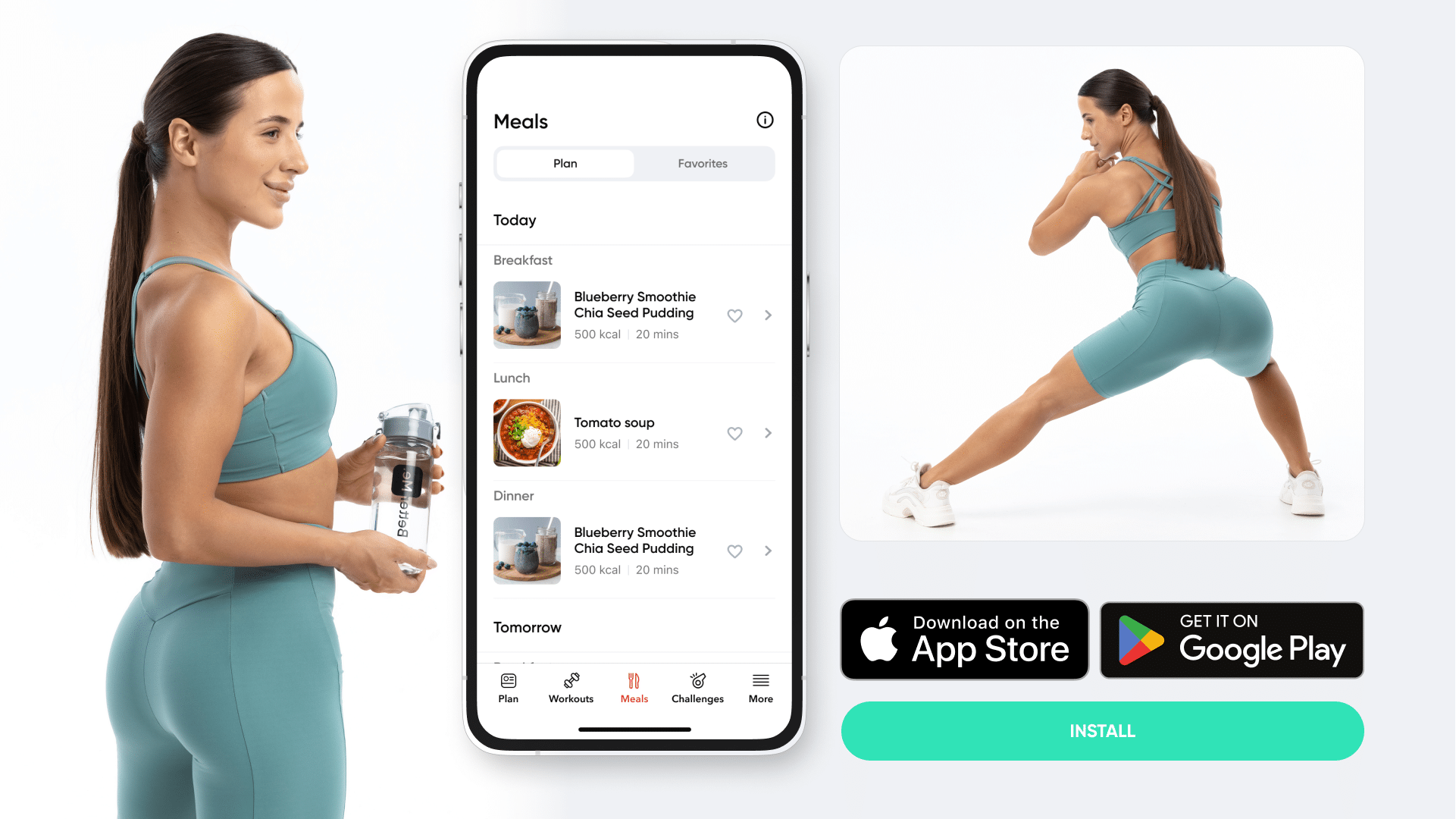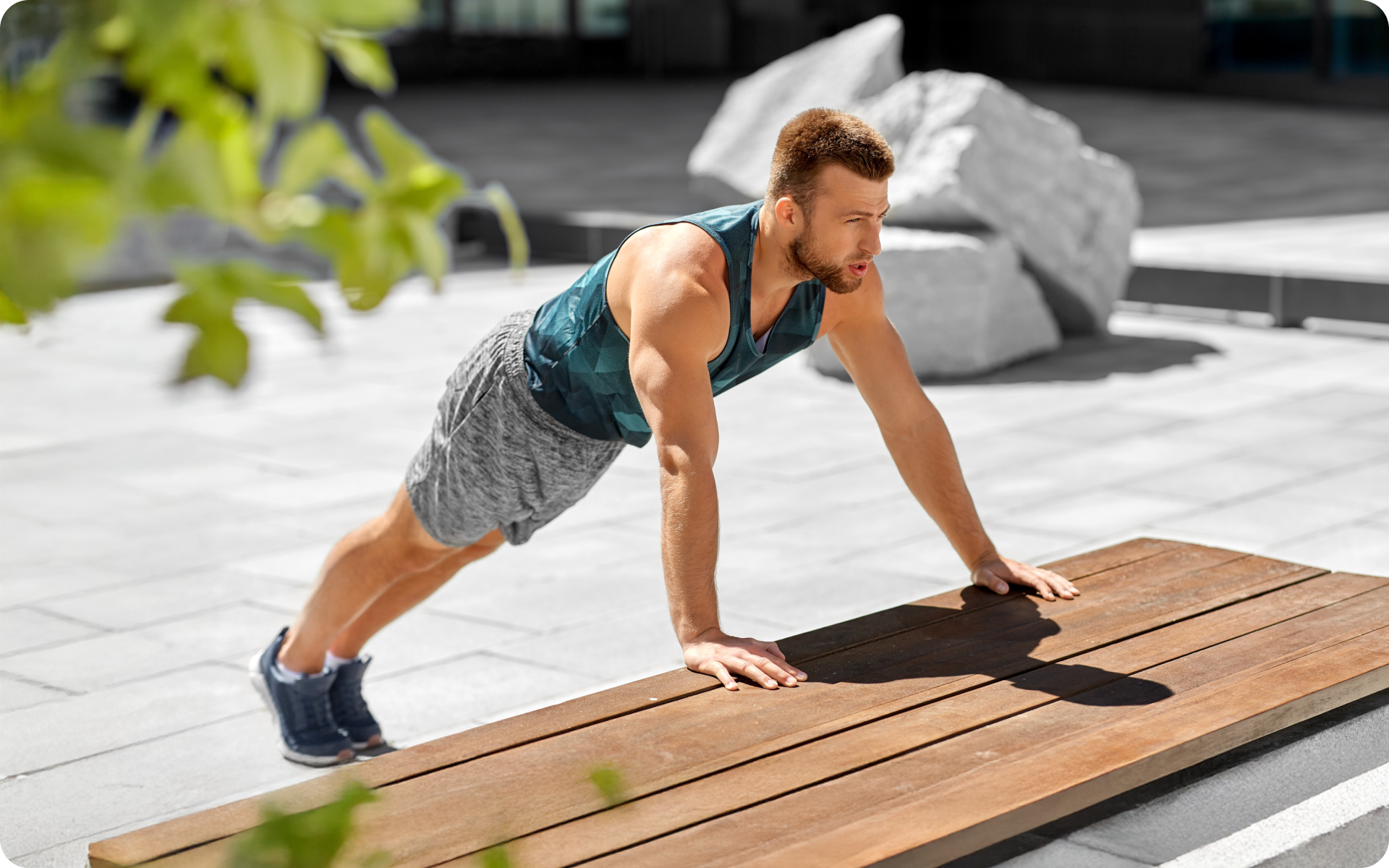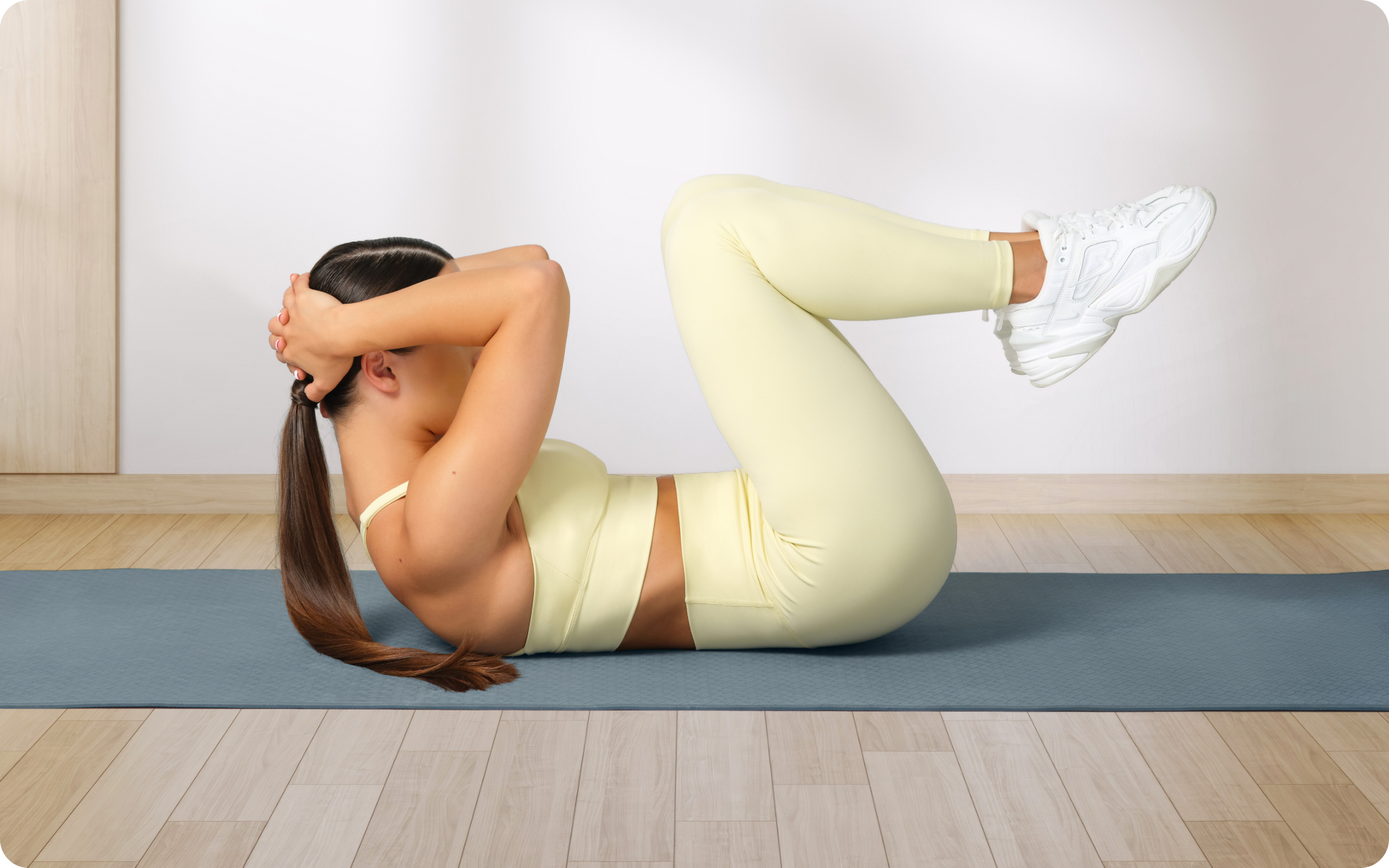The core is often referred to as the powerhouse of the body, and for good reason.
The muscles comprising the core, including the rectus abdominis, obliques, and the transverse abdominis, serve various essential functions.
For example, the rectus abdominis supports movements of the spine and maintains your posture, while the obliques allow for side bending and waist twisting.
The transverse abdominis, however, is of particular interest when discussing the stomach vacuum exercise. This deep-seated muscle acts like a corset, pulling your belly inward, and plays a critical role in breathing, stabilizing the core, and protecting the spine.
The stomach vacuum exercise, when done correctly and consistently, can enhance core stability and contribute to a slimmer waistline appearance.
But, for it to be effective, one must understand its steps, benefits, and precautions.
What Are the Stomach Vacuum Exercises?
The stomach vacuum exercise is an isometric abdominal exercise that involves drawing in and holding the core muscles, especially the transverse abdominis (4). It’s called isometric because it requires you to tense the muscle without moving through a certain motion, similar to planks or wall sits.
Other names for this exercise include “abdominal hollowing” “abdominal drawing-in maneuver” or simply “stomach vacuum.”
Initially popularized in the 1960s by bodybuilding legend Arnold Schwarzenegger, it has made its way back into fitness routines and has gained recognition for its effectiveness in toning and slimming of the midsection.
Unfortunately, many people overlook the stomach vacuum exercise, assuming that it is not as effective as traditional core exercises like crunches or planks.
However, this couldn’t be further from the truth.
The stomach vacuum exercise primarily targets the deep-seated muscles of the core, which are often overlooked in conventional ab workouts.
By strengthening these underlying muscles you can achieve a slimmer waistline and improve your overall core stability.
A common misstep when performing the stomach vacuum exercise is sucking in your stomach rather than contracting the deep abdominal muscles.
This happens when the person performing the exercise is unable to differentiate between “sucking in” and “pulling in.”
Sucking in your stomach merely involves shallowly pulling your abdominal muscles towards your spine, while pulling them in entails a deeper contraction of the transverse abdominis.
To effectively perform this exercise, it is crucial to understand the difference.
If you tend to let yourself off the hook, raise the white flag when things get tougher than you expected, send yourself on an unconscious binge-eating trip – BetterMe app is here to help you leave all of these sabotaging habits in the past!
How to Do Stomach Vacuum Exercise
There are five ways to perform the stomach vacuum exercise: Standing, Sitting, Supine (Laying Down), Quadruped (Kneeling), and Prone (Face Down). You may find some of these positions easier than others. Here are steps for executing the stomach vacuum in each of these five positions:
Standing
- Assume a standing position and get your hands set on your hips.
- Start by taking a full breath in via your nose, then exhale slowly through your mouth, making sure your lips are pursed.
- As you let the breath out, consciously pull in your lower abs, contracting the muscles.
- Breathe normally and hold that tucked-in position for a good 20 to 30 seconds.
- This is one set — do this 2 to 3 times for best results.
Sitting
- Find yourself a chair and sit upright.
- Your back must be straight, feet flat on the ground, with your palms resting lightly on your thighs.
- Breathe in deeply, then slowly exhale through your mouth while pursing your lips, contracting your lower abs, and pulling your belly button in towards your spine.
- Breathe normally while holding this for 20 to 30 seconds.
- Repeat this process 2 to 3 times.
Supine (Laying Down)
- Settle down comfortably on the floor, ensuring your spine is neutral, knees bent and feet flat.
- You can make it easier to feel your abs working by placing two fingers on the top of your hip bones and moving them inward and downward.
- Take a deep breath in, slowly exhale out and simultaneously draw your lower abs in.
- Hold on to this position for at least 20–30 seconds. Do this 2 to 3 times.
Quadruped (Kneeling)
- Position yourself on all fours; your knees should be directly under your hips and wrists under your shoulders, and your back should be flat and in line.
- After you take a deep breath in through your nose, exhale through your mouth, bringing your belly button towards your spine as your lower abs pull in.
- Do your best to hold this for 20 to 30 seconds.
- Repeat this 2 to 3 times.
Prone (Face Down)
- Lay face down on the floor, with your legs straight and arms extended past your head, making sure your palms are facing down.
- Deeply inhale and slowly exhale through your mouth while your lips are pursed and your lower abs contract and get pulled in.
- Don’t forget to breathe normally and hold this position for a span of 20 to 30 seconds.
- Repeat this procedure 2 to 3 times.
Read more: Does Holding In Your Stomach Help Flatten It? Unraveling the Myths
Mistakes to Avoid While Doing Stomach Vacuum Exercise
As with any exercise, there are a few mistakes to watch out for when performing the stomach vacuum exercise:
Not Breathing Properly: Many people hold their breath while performing this exercise, which not only decreases its effectiveness but can also lead to dizziness and lightheadedness (6).
Relying on the Rectus Abdominis: The stomach vacuum exercise primarily targets the transverse abdominis muscle, so it is crucial to focus on engaging that muscle and not relying on the rectus abdominis (six-pack muscles).
Overarching Your Spine: It’s essential to maintain a neutral spine while doing this exercise, as arching your back can put unnecessary strain on your lower back.
Not Contracting Enough: To get the full benefits of this exercise, you must contract your deep abdominal muscles fully and hold the contraction for a sufficient amount of time.
Do Stomach Vacuum Exercises Work?
Yes, stomach vacuum exercises do work if done correctly and consistently.
Here are some stomach vacuum exercise benefits worth noting:
Toning and Strengthening the Core
This exercise targets the deep abdominal muscles that are often neglected in traditional core workouts. By strengthening these muscles you can improve the outcome of your workout and achieve a more defined waistline (2).
Improving Posture
A strong core is essential for maintaining proper posture and preventing lower back pain. By strengthening the deep abdominal muscles, you can improve your posture and reduce the risk of injury (2).
Improved Breathing
The stomach vacuum exercise also helps to improve breathing by increasing lung capacity and engaging the diaphragm. Each time you exhale during the exercise you are pushing air out of your lungs and engaging the diaphragm, helping to strengthen it (1).
A Slimmer Waistline
By toning and strengthening the muscles in the midsection you can achieve a more defined waistline. Note, the effect is more like cinching than actual weight loss. So when doing the stomach vacuum exercise for a flat stomach, make sure to combine it with a healthy diet and overall fitness routine for best results.
Check out our blog: Best Exercises to Lose Belly Fat: Female for more tips on how to achieve a flat stomach.
Better Digestion
The transverse abdominis muscle also plays a vital role in digestion, so strengthening it can have positive effects on your digestive system (3).
By contracting and pulling in your lower abs, you help to stimulate movement in the intestines, which can combat bloating.
The deep breathing involved in this exercise helps to increase blood flow to your digestive organs, promoting better digestion.
BetterMe app is a foolproof way to go from zero to a weight loss hero in a safe and sustainable way! What are you waiting for? Start transforming your body now!
Can You Lose Belly Fat By Stomaching Vacuum?
The stomach vacuum exercise will not result in significant fat loss as a standalone exercise, mainly because it does nothing to raise your heart rate or to expend a significant number of calories.
Fat loss is strictly dependent on creating a calorie deficit through a combination of diet and exercise.
That said, this exercise can certainly help create a toned midsection by strengthening, and contracting your deep abdominal muscles and improving posture, which can make your stomach appear flatter.
By extension it can improve your performance on other exercises, allowing you to burn more calories and potentially lose belly fat in conjunction with a healthy diet and overall fitness routine.
For example, a strong core can help improve your form and stability while doing exercises like squats, deadlifts and overhead presses, allowing you to lift heavier weights and burn more calories.
In our blog – 3 Best Exercises to Lose Belly Fat After 50, we discuss the importance of a well-rounded fitness routine for losing belly fat and achieving overall health.
How Many Stomach Vacuums Should I Do Per Day?
Spending at least 10 minutes every day doing stomach vacuum exercises is recommended for beginners.
As you become more experienced, you can increase the duration of each hold and the number of repetitions to see greater benefits.
How many stomach vacuums you do isn’t nearly as important as your technique and consistency.
Make sure to engage your deep abdominal muscles fully, hold the contraction for an adequate amount of time, and do the exercise consistently to reap its benefits.
Combine this exercise with a healthy diet and overall fitness routine for optimal results.
What Is The Disadvantage of Stomach Vacuum?
The main disadvantage of stomach vacuum is when it’s not always performed correctly nor consistently, as many don’t categorize it as a “real” exercise. This can lead to poor technique and lack of results.
Furthermore, since many want quick and visible results, the stomach vacuum exercise may be overlooked in favor of other exercises that offer more immediate results.
Other downsides of the stomach vacuum are:
Limited Calorie Burn: As mentioned earlier, this exercise does not significantly raise your heart rate or expend a significant number of calories, so it will not contribute to significant fat loss on its own.
Potential for Strain: If you have a history of lower back pain or weak abdominal muscles, this exercise may put too much strain on your lower back. It’s crucial to start slow and build up strength gradually to avoid injury.
Requires Good Technique: To see the full benefits of this exercise, it is essential to have proper form and technique. If done incorrectly, you will not engage the deep abdominal muscles fully and may even cause harm to your back.
Not Suitable for Everyone: This exercise may not be suitable for pregnant women, individuals with hernias or other abdominal injuries, or people with high blood pressure.
Read more: Toned Stomach vs Flat Stomach: Which One Is Best, and Why?
How Long Does It Take To Get Results From Stomach Vacuum?
You may notice improvements after a few weeks of doing the stomach vacuum exercise. The most immediate change is that performing the exercise will become easier and more comfortable with practice.
However, visible results will take longer to achieve. This depends on various factors such as consistency, proper technique, and overall fitness level.
If you’re consistent and combine this exercise with a healthy diet and overall fitness routine, you may see noticeable changes in your core strength and waistline within 6-12 weeks.
Expecting 1 week of stomach vacuum results may lead to disappointment, so it’s essential to have realistic expectations and stick with the exercise for long-term benefits.
Our Flat Stomach Challenge can help you stay on track and see results healthily and sustainably.
FAQs
Is It Safe To Do Stomach Vacuum Everyday?
The stomach vacuum exercise is gentle enough to do every day, if done correctly and without any preexisting injuries.
However, as with any exercise routine, it’s essential to listen to your body and take breaks when necessary.
If you experience any discomfort or strain in your lower back, it’s best to consult a doctor or physical therapist before continuing the exercise.
What Is Hourglass Syndrome?
Hourglass syndrome is a term used to describe the appearance of having a small waist and wider hips, similar to an hourglass shape.
It can occur naturally or be achieved through targeted exercises, such as the stomach vacuum.
While many may strive for an hourglass figure, they may overlook other markers of health and fitness. It’s essential to focus on overall well-being rather than solely one’s appearance.
In addition, they overlook the role that genetics play in body shape and may become frustrated if they don’t achieve their desired look through exercise alone.
Ultimately, it’s essential to prioritize health and focus on holistic fitness rather than solely striving for a certain body shape or aesthetic.
Do Vacuums Flare Your Ribs?
Stomach vacuums, done correctly, should not cause your ribs to flare.
Flaring ribs can indicate that you are not engaging your abdominal muscles fully and may have a weak core.
Focus on pulling in and contracting your stomach rather than pushing it out. It’s also helpful to practice in front of a mirror to ensure proper form.
If you continue to experience rib flaring, it’s best to consult a trainer or physical therapist for personalized guidance.
The Bottom Line
The stomach vacuum exercise may not be a magical solution for achieving a flat stomach, but it offers numerous benefits for core strength, posture, breathing, digestion, and overall fitness.
By combining this exercise with proper nutrition and a consistent workout routine, you can achieve a more defined waistline and potentially lose belly fat.
DISCLAIMER:
This article is intended for general informational purposes only and does not serve to address individual circumstances. It is not a substitute for professional advice or help and should not be relied on for making any kind of decision-making. Any action taken as a direct or indirect result of the information in this article is entirely at your own risk and is your sole responsibility.
BetterMe, its content staff, and its medical advisors accept no responsibility for inaccuracies, errors, misstatements, inconsistencies, or omissions and specifically disclaim any liability, loss or risk, personal, professional or otherwise, which may be incurred as a consequence, directly or indirectly, of the use and/or application of any content.
You should always seek the advice of your physician or other qualified health provider with any questions you may have regarding a medical condition or your specific situation. Never disregard professional medical advice or delay seeking it because of BetterMe content. If you suspect or think you may have a medical emergency, call your doctor.
SOURCES:
- Effects of Diaphragmatic Breathing on Health: A Narrative Review (2020,nih,gov)
- The real-world benefits of strengthening your core (2012,harvard.edu)
- The Importance of Core Strength for Digestive Health (2023,foodguides.com)
- The Stomach Vacuum Exercise (2018,bodybuilding.com)
- Why Proper Breathing During Exercise Is Important & How to Avoid Common Mistakes (2023,houstonmethodist.org)










